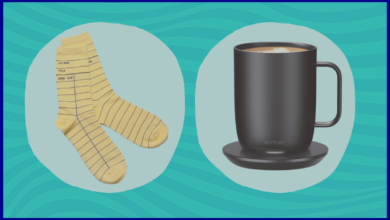Women eat less meat than men. But should they?

For better or worse, some stereotypes hold true, including, according to a new study, that men eat more red meat than women.
The research, published in the journal Nature Scientific Reports, considered the consumption habits of 21,000 people in 23 countries and found that men ate more meat than women. The meat consumption gap was even wider in wealthier and more gender-equal countries.
But should women be eating less red meat than men? Here’s how steak and burgers affect health.
What are the health benefits of red meat?
Red meat — including steak, pork and processed versions of each, like hamburgers and hot dogs — is protein-rich and contains B vitamins, iron and zinc, according to dietitian Michelle Routhenstein.
Protein is great fuel for building and repairing muscle and bones, and B vitamins have a wide range of benefits, including overall brain health and robust blood cell production. Zinc, meanwhile, is critical to strengthening one’s immune system. And iron ensures that oxygen is carried efficiently throughout your body and helps in the production of certain hormones.
What are the risks?
Red meat is rich in saturated fats, which are, quite literally, too rich for our blood. Saturated fats contribute to elevated levels of “bad” or low-density lipoprotein (LDL) cholesterol, which contributes to plaques that clog and harden the arteries.
A major Oxford University study published in 2023 found that people who ate diets high in unprocessed red meats — such as steaks — were at a 9% greater risk of developing heart disease. Those who ate as much processed red meat, like hot dogs and hamburgers, were at an 18% greater risk.
Red meat is also associated with elevated risks for certain cancers, especially those of the colon and rectum. It may also increase the risks of prostate and pancreatic cancer, though the science is less definitive when it comes to those diseases, according to the National Cancer Institute.
Are there differences in how red meat affects men and women?
Men and women get the same nutrients from red meat, but their needs are different. The distinction is most significant regarding iron. Both sexes need iron to help carry oxygen throughout the body, but women have a higher “demand” for it, says San Francisco-based dietitian Edwina Clarke.
“For women of childbearing age, iron is a concern,” Clarke tells Yahoo Life. “Particularly during pregnancy, it’s quite hard to keep up with iron needs … because your blood volume doubles and iron is important to the development of the fetus as well as to the general health and wellness of mom.”
Even outside of pregnancy, women lose an average of two ounces of blood during each period, according to the National Institutes of Health. And with that blood goes the iron in it, depleting women’s levels. Periods are the suspected culprits behind widespread iron deficiency among young women in the U.S. One study published in JAMA found that nearly 40% of women and girls between the ages of 12 and 21 were iron-deficient. And the World Health Organization estimated in 2019 that, globally, about 30% of non-pregnant women of reproductive age and 37% of pregnant women were anemic.
While both men and women need protein and iron to build muscle and carry oxygen through the bloodstream, men simply don’t have additional iron, unless they’re high-performance athletes, says Clarke. Although it may have cultural associations with masculinity, and men may eat red meat to get extra protein in an effort to build muscle.
On the other hand, the data we do have suggests that the risks posed by eating too much red meat are essentially the same for men and women. A 2023 study published in the European Heart Journal found that rates of both heart disease and diabetes were elevated about equally for men and women who ate lots of red meat.
Should women eat less red meat than men?
Experts say that it would serve everyone well to keep their red meat intake at moderate or low levels. But just how much red meat you should eat “depends on your iron needs,” says Clarke, and that’s based on “whether you’re pregnant or not pregnant, what your overall diet looks like, whether you have a history of low iron or you’ve been a competitive athlete — the risk profile depends on the individual.”
Clarke says that most studies linking red meat to higher rates of health problems are observational, that is, they can’t prove that red meat is what causes health problems. But it’s worth noting that the diets of people living in the world’s so-called Blue Zones — areas like Okinawa, Japan, where longevity is uncommonly high, and rates of disease later in life are uncommonly low — involve little red meat.
“While red meat may offer nutrients like protein, B vitamins, iron and zinc, alternative lean animal proteins exist that provide these benefits without the associated risks of heart disease and cancer,” says Routhenstein. Red meat is by no means the only source of iron, it just happens to be one of the most “bioavailable” ways to get the nutrient, says Clarke.




